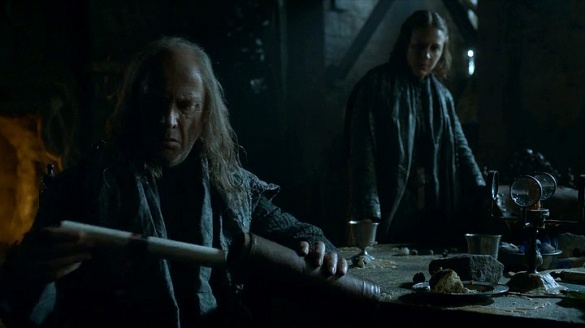Disclaimer: There are no spoilers in this article. I have only read the first three books and I have no knowledge of what transpires in the show moving forward. Any views or content expressed are solely personal theories, opinions and insights.
FAITH HAS BEEN LOST
Just like that, we’re back in the wonderful world of Thrones, and without any hesitation, we already have much to ponder from the season’s first episode. In large, the premiere Thrones episode did what it always does — it picked up the pieces from where things left off last season and got viewers back in the swing of each character’s storyline. It served as much as a reminder as it did to offer any new information. And that’s okay — that’s what the first episode is supposed to do — it gently eases us back into the swing of things. That said, there were still several major twists and turns, some which left us scratching our heads in confusion, and others which will have major implications upon the story that is to unfold in the coming episodes.
I thought that the episode felt a little choppy — jumping around from one character to the next without necessarily establishing much of a rhythm. One moment we were in the freezing cold North and the next minute we were in the desert of Easteros. That is not to say that a normal Thrones episode doesn’t move around — of course, it does. But there is a generally a deeper exploration into what is going on in each location, whereas this episode seemed to just scratch the surface before passing onto the next location and story. Again, that’s okay. But even with the choppiness of the episode, there was one theme that seemed to be constant, regardless of character or location: a loss of faith.
In a world where the stakes are often so incredibly high, faith, and where each character chooses to put their faith, has been a common theme since the beginning. Whether it’s believing in a certain god, backing a certain character or house in war, or simply believing in one’s self, faith has been a driving force behind many of the characters’ actions and the plot’s story-lines. Yet, as we began our journey into the sixth season, we saw that many characters’ faith had begun to erode, if not vanish altogether. A once bold and confident Arya is now begging on the street, seemingly having lost faith in the Faceless Men and her mission to avenge the deaths of her loved ones. Cercei appears to have lost faith in the one thing she always had faith in — herself. Roose Bolton hinted at beginning to lose faith in his son, Ramsay. The Sand Snakes lost faith in their Prince Doran, so much so that it led to a murderous coup. In her absence, Khaleesi’s followers appear to have lost faith, as Mereen has become a dark and empty city. And last, but certainly not least, we get glimpse of Melisandre as a 200-something-year-old weak and fragile woman, appearing to have lost all faith in the Lord of Light, tucking herself into bed as she resigns to her faithlessness. As this season continues, it will be interesting to monitor the arc of each character’s faith, and how that faith, or lack thereof, will drive the actions of each of the story’s characters.
YES, HE’S DEAD
For those viewers who spent all offseason asking, “Is he definitely dead?”, Thrones producers were sure to answer that question right off the bat. The answer: yes, Jon Snow is definitely quite dead. But, that of course doesn’t mean that he will stay dead. So, the real question is whether or not he is going to be brought back to life. If so, when, and by whom? My personal hope is that this question is answered sooner rather than later. If not, I fear that this question will linger in the mind of each viewer, and ultimately risk overshadowing everything else going on in the story.
As Jon Snow’s supporters group around his dead body, Ser Alliser Thorne boldly admits to the treason he and the others have committed, but justifies their actions. As Thrones so effectively and so often does, we are offered a glimpse into a certain characters vantage point, and shift our views on that character, even if just for the moment. Sure, we are all going to hate Ser Alliser and Olly and the other characters that murdered Jon Snow — we’ll hate them forever. But, after hearing Ser Alliser speak, I hated him just a little less. He did not make any excuses or hide the truth — he outright confessed to the treason they all committed. But he also explained it. He, and the others, have dedicated their lives to the Night’s Watch. They live a cruel and bitter existence in the freezing cold at the Wall, defending the realm from the evil that lurks beyond. It is a life that certainly no person could or would ever envy. And in their eyes, there was a crazy and radical Lord Commander who was making terrible decisions that not only put their lives at risk, but also compromised the Wall and everything south of it that they are sworn to protect. Keep in mind, in the thousands of years that the Wall has been around, no Lord Commander has ever let Wildlings through — the very thing Jon Snow was trying to do.
Sure, desperate times call for desperate measures, and I’m not saying that Jon Snow’s attempt to unit the Wildlings with the Night’s Watch wasn’t the right decision — maybe it was the only one that gave them a legitimate chance of fighting off the impending White Walkers. But that’s just our opinion. The opinion of the other brothers of the Night’s Watch was that he was insane for even considering doing this and it would put all their lives at risk. And, this was a sentiment that they often shared with Jon Snow throughout season 5. Remember, it was Ser Alliser that told Jon Snow, “You have a good heart, Jon Snow. It will get us all killed.” They often expressed their discontent with Jon Snow’s decisions, and that discontent later turned into warnings — but Jon Snow ignored them all. Part of being a good and effective leader is not just making the right decision, but also listening to those around you. And while Jon Snow might’ve been making the right decision, he was failing miserably at listening to those around him. So finally, when Jon Snow actually tried to return to the Wall with hundreds of Wildlings, the sworn enemies of the Night’s Watch, some of the brothers felt they had no choice but to remove the man who was putting all their lives at risk. As Ser Alliser stated, “Jon Snow forced this decision upon us; and I made it.”
To be clear, I am not defending the actions of Ser Alliser and the other brothers of the Night’s Watch. It was cold-blooded murder of the worst kind. But, it is important to stop and think about why these brothers did what they did. And up until Ser Alliser’s speech, that’s something that I had not done. I was too blinded by my hatred for them to stop and think about what actually drove them to this extreme — the fact that they actually thought that Jon Snow was risking all their lives, the Wall itself, and all that they were sworn to protect. It’s understandable that Snow’s extreme measures cornered them into feeling vulnerable and threatened. So finally, they did the one thing they thought they had to do — and I don’t believe they took any joy in it. Even though Ser Alliser never liked Snow, he himself proclaimed that he never once disobeyed an order. In some ways, looking back, Jon Snow’s continual ignorance of all the warnings he received about what he was doing with the Wildlings, reminds me of how his brother, Robb Stark, often ignored the counsel he was given. Both thought they knew best and were largely blinded by honor and duty. And both ended up betrayed and brutally murdered by the people they failed to listen to.
DAVOS & THE OTHERS
As Ser Alliser tries to unite the rest of the brothers, Ser Davos, Ghost and the others gather around Snow’s dead body. To date, Ser Davos has always played wingman to Stannis, though he often showed an ability to make important decisions of his own, even sometimes defying Stannis (i.e. setting Gendry free after Stannis and Melisandre decided to sacrifice him). So if you think about it, he always showed instances of stepping out and being a leader — and now he finally can. With Stannis gone, Melisandre in no shape to lead (we’ll get there), and Jon Snow laying there dead, Davos is thrusted into the position of having to lead, whether he likes it or not.
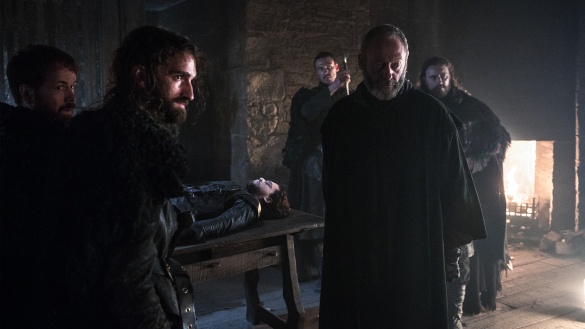
One of Snow’s closest supporters from the beginning, Dolorous Edd makes a run for it to try and rally up support, after Davos tells them that they were not the only ones Jon Snow had helped (implying that there are others out there who will rally to support them). It’s not crystal clear to whom Davos is referring, but one guess is that Edd is off to find Tormund Giantsbane, the Wildlings and the Giants that Jon Snow had saved from the White Walkers at Hardhome. Even a small fraction of those Wildlings that Jon Snow saved, with the support of Tormund and/or a Giant or two, should easily be able to take on the 40 brothers of the Night’s Watch. But, time is ticking and Davos only has until nightfall to give Ser Alliser an answer. And, who knows if Ser Alliser will honor his offer of setting them free if they surrender, or just murder them on the spot. One thing is for sure, if Edd doesn’t return soon with some reinforcements, Davos and the others may be out of luck.
THE RED (AND VERY OLD) WOMAN
Davos and the others may be saved by somebody other than Dolorous Edd, or at least Ser Davos thinks so. He tells the others, “You haven’t seen her do what I’ve seen her do.” And just when we think the Red Woman, Lady Melisandre might be coming to the rescue, we are thrown a total curveball in the final scene of the premiere episode. As Lady Melisandre begins to take off her clothes, (and I begin to think to myself “Does this chick ever keep her clothes on?”), we see her stare into the mirror with hopeless eyes. Those very same eyes that once burned with faith for her fiery god, now appear cold and empty, no faith to be found. Then, she removes her choker that holds the fiery red gem, and we see that she now appears as an extremely old, weak and fragile woman, who crawls into bed, almost as if to say “I’m done. I’ve lost all faith. I’ve given up and now I am going to sleep for good.”
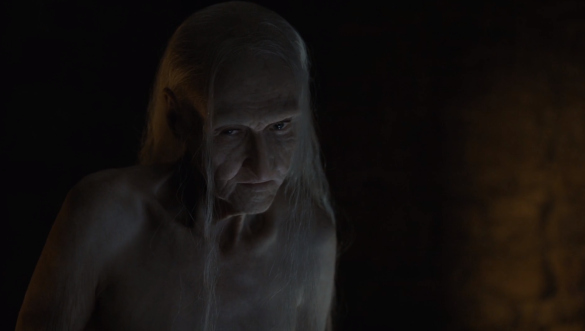
So let’s break it down for a minute and consider what we really just saw and what this might mean. The first option is that Melisandre is in fact a 200+ year old woman who has used her magic and potions to trick us this whole time and maintain the physical appearance of a young and beautiful woman. That is, she is an old woman simply masking her appearance — and this is what probably came to mind for most people. But, another theory could be the complete opposite — she is in fact a young woman who has physically aged so much as a result of all her blood magic and witchcraft. That is, the Melisandre we have seen to date is actually her real age, but all the dark magic she has practiced and sacrifices she has made to the Lord of Light have aged her so much that she actually looks like the woman we saw at the end of the show.
In either scenario, one question to be asked is: what is it that has kept her looking so young, and why all of a sudden did she look so old? The first assumption is that it was her magic choker necklace with the fiery red gem inside of it that keeps her young, and removing that revealed her true appearance. But, we can squash that theory, at least to some degree, by looking at the below photo, which shows Melisandre taking a bath, choker-free, and still looking young and beautiful.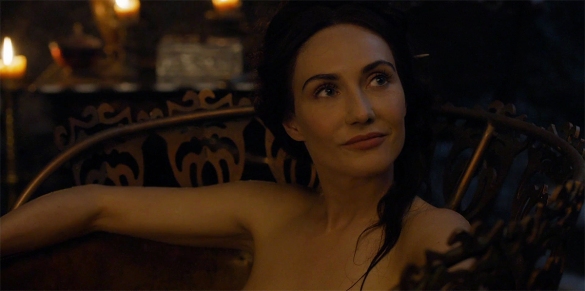
So, maybe it’s not the choker, or at least not only the choker. Another hypothesis is that it has something to do with those potions we saw on the table next to the mirror she was looking into. The camera was definitely focused on those potions, and as we know, Thrones is not the type of show to focus on something without there being a purpose to it. So, maybe, it was the potions that she has been taking to maintain a youthful appearance. What’s very interesting is to consider the below two photos/gifs, both from the very same bathtub scene as the photo above. The first shows a different angle of Melisandre in the bathtub, in which you see that although she is not wearing her choker, she actually has a bottle of one of her potions in hand! So maybe she pours that into her bathwater, a fountain of youth if you will. The second photo shows her standing near a whole array of elixirs and potions. So I’m definitely going with the potion theory here.


One last theory is that maybe Melisandre’s constant desire to obtain king’s blood was not to sacrifice it to the Lord of Light, but rather because she needed it to stay young. Let’s recall, she seduced Stannis and had sex with him. She did the same with Gendry and used his blood as well. And, she attempted to seduce Jon Snow as well, though he withstood her attempts. Perhaps she needs contact or actual king’s blood to stay young, and now that she has none, this is why she is appearing as she did in the last episode.
So maybe that last scene signified her resignation; Melisandre is finally giving up, no longer taking any potions, and getting into bed as the old woman that she truly is. But this begs the question, why has she lost all her faith? Well, the answer to that question seems pretty simple. For seasons, she proclaimed that Stannis was the Prince Who Was Promised, the one true king who would fight back the darkness. After all, she herself had seen it in the flames. Well, that quickly turned out to be a false prophecy, as Stannis’ army got slaughtered by the Boltons. And, let’s not forget that Melisandre convinced Stannis to sacrifice his only daughter by burning her alive, as an offering to the Lord of Light. Then there was Jon Snow, who in the flames Melisandre saw fighting at Winterfell — wrong again about that one (or was she?). After all that Melisandre had seen in the flames, and all the faith she had acted upon, it’s natural that she is ready to give up after learning that she was wrong about everything.
But, let’s pause for a second. If Melisandre is truly hundreds of years old, that means she’s been around for quite some time and has many many years of experience with the Lord of Light and its mysterious ways. Even if she was wrong about Stannis, Jon Snow and the things that have transpired over the last couple of seasons, it seems odd that she would give up altogether, given all the years that it appears she has been practicing. In other words, if that’s really how old she is, it seems like she’s been doing this a really long time, and wouldn’t be so shaken or distraught by the recent happenings — it would just be a small dot on her timeline. Then again, maybe she’s been doing this for so long that she no longer has the will to go on. Or, back to one of the original theories above — maybe she in fact is not that old — maybe she is only the age of the Melisandre we’ve seen to date, but all the dark magic has taken a toll on her physical body — that’s the price she’s had to pay, and she’s now ready to give up.
And then, there’s one final theory. It’s not necessarily one that I believe, but it’s one worth pondering. Maybe Melisandre isn’t giving up. Maybe she hasn’t lost faith. Maybe, just maybe, she is making the ultimate sacrifice. She is taking off her jewelry, giving up her beauty, and perhaps even going to sleep forever — a final sacrifice to the Lord of Light — an ultimate show of her faith. Why you ask? To bring back Jon Snow of course! Again, this is not necessarily what I think to be, but it’s a theory worth keeping in mind. We’ll soon find out what comes next for Melisandre, but with her in no apparent condition to be saving the day, be on the lookout now more so than ever, for Thoros of Myr.
SNAKES IN THE SAND
Prince Oberyn’s bastard daughters, the Sand Snakes, really gave meaning to their name in this last episode. Like snakes in the sand, they colluded out of sight, and pounced to strike as they preyed upon the weak. Of course, it was Ellaria that orchestrated all of this and ultimate stuck her blade into Prince Doran, but the Sand Snakes were just as much a part of the plan, as one of them killed Prince Doran’s guard and the other two took care of Trystane. As Prince Doran took in his last breaths of air, Ellaria reminded him of why they did this: Prince Doran refused to take action to avenge the deaths of Elia Martell (Oberyn and Doran’s youngest sister who was married to Rhaegar Targaryen, and raped/murdered by the Mountain during the overthrowing of the Mad King), and also once again when Oberyn was murdered by the Mountain after he himself tried to avenge the death of his sister and her babies. The Dornish have always been a hotheaded people that seek revenge and are quick to strike. But, Prince Doran was different and cared more about keeping the peace. Ellaria and the Sand Snakes had enough of it, and to begin their quest for revenge, they first had to remove Prince Doran from the equation. It will be interesting to see what happens next and to what extent Ellaria and the Sand Snakes have the people of Dorne behind them. They may first face a civil war within Dorne, before they can pursue their larger war against the Lannisters, but that remains to be seen.
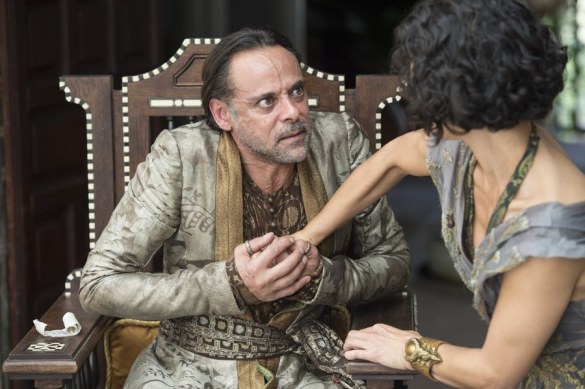
US AGAINST THE WORLD
As Cercei looks out onto the boat returning from Dorne, she sees Jaime without Myrcella, and she already knows that she has lost another child. The feeling is all too familiar, and her motherly instincts have become keen to sensing the loss of a child. But we see a much different side of Cercei, a side that is without faith or conviction; she appears defeated altogether. Where she once would have responded with outrage, demanding to spill the blood of those who took her children from her, she now appears despondent — her instinct for vengeance has been dulled by all the suffering she has endured. Losing Joffrey to poison, losing Tommen to Margaery and the crown, being held prisoner until she was broken by the High Sparrow, and now losing Myrcella — the daughter that was “pure good.”
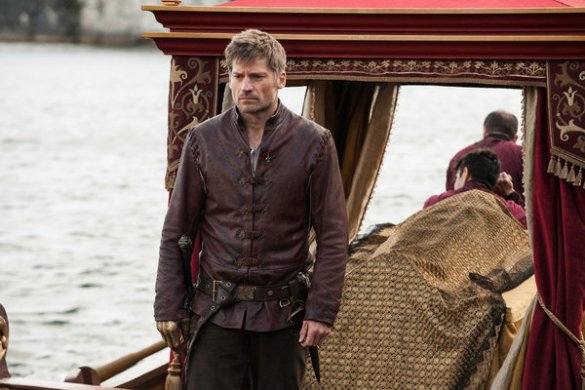
The old Cercei would have screamed at Jaime, telling him that it was his fault for not protecting her; the new Cercei has lost all faith, telling Jaime it is not his fault, and stating that it was the prophecy of the witch she saw when she was child (see video below for refresher on this flashback). The old Cercei would have never believed in some tale from a witch in the forest. But the new Cercei is broken and faithless. Instead, it is now Jaime who tells Cercei that it is just the two of them against the world and that they will take back what they have lost and so much more. The Lannisters now have quite a few battles on their hands and we will need to see where their support will come from, and to what extent House Lannister has a standing army prepared at Casterly Rock.
THE BOLTONS
At Winterfell, Ramsay Bolton mourns the loss of Myranda, in his own sick and twisted way. Moments later, Roose Bolton chastises Ramsay for his loss of Sansa and Theon, heirs to the North and the Iron Islands, respectively. Once again, we see a loss of faith, and Roose seems to question the amount of trust he can truly put in Ramsay and all of his “little games.” So much so that Roose mentions that he is trying to put a baby in Walda, in which case he wouldn’t need Ramsay as an heir. As a refresher, Walda is one of the Frey daughters that Walder Frey gave to Roose Bolton as part of their collusion in the Purple Wedding. Roose also mentions that Ramsay’s victory over a depleted Baratheon army is nothing compared to the battle they will face against a well-provisioned Lannister army. Though the Lannisters now have other fish to try (namely against the Martells and possibly the High Sparrow), Roose Bolton defied the Lannisters by marrying Sansa to Ramsay, and that positions House Bolton and House Lannister as enemies.
SANSA, THEON, BRIENNE & POD
Elsewhere in the North, Sansa and Theon miraculously survived their jump from the top of the Winterfell walls, which was a bit inexplicable, but I guess unimportant to the story. As they run through the forest and arrive at a freezing river that they must cross, Theon talks Sansa through it and gets them safely across. This is a major progression for a character who was once no more than an obedient dog to Ramsay. In fact, so much so, that I almost feel that they are progressing his character too fast. For seasons, he appeared as an irreparably damaged thing — he couldn’t even be called a person. He was so far beyond coming back from whatever he had come. Then, all of a sudden, he is defying Ramsay, saving Sansa, jumping off walls of castles, and now even has the strength to calm Sansa and help guide her through the forest. I am all for the character progression and it’s great to see some semblance of Theon back, but it all just feels a bit rushed.
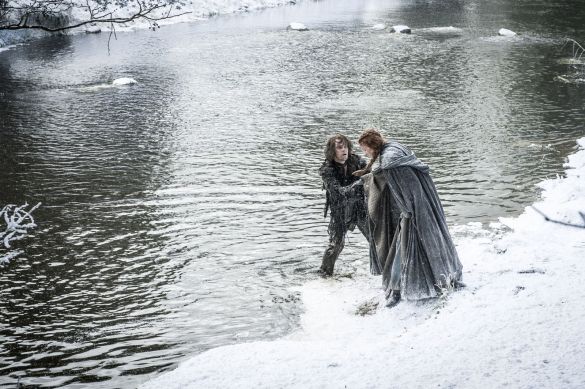
Anyway, after Sansa and Theon embrace in a comforting hug, Theon risks his life to save Sansa as the Bolton bannermen find them. And just as it seems that George R.R. Martin might be the cruelest man alive and actually subject them (and us) to the idea of going back to Ramsay, Brienne and Pod arrive to save the day. But more significant than Brienne saving Sansa was her pledge to protect Sansa as she continues on her journey. As Sansa accepted Brienne’s pledge, it was a powerful and symbolic moment — a proverbial passing of the torch — as Sansa forms a union with Briene and takes ownership of House Stark, as her mother did before her. And with Arya in trouble in Easteros and Bran and Rickon both split up, Sansa is the only Stark that now appears to be headed in a positive direction. Maybe, just maybe, she is approaching the light at the end of the tunnel and will be able to restore some good to House Stark. Theon had told her to proceed north to the Wall to link up with Jon Snow, which might not be the best of ideas. We’ll see which direction they head, but with Theon, Brienne and Pod at her side, Sansa finally appears safe, even if just for the moment. We’re all rooting for House Stark, that’s for sure.
KHALEESI
When is the Khaleesi storyline ever going to go where we want it to go? It seems like every time she takes one step forward, she takes two steps back. She’s got 3 dragons, a huge army, a circle of loyal supporters — yet somehow she ends up alone and captive to the Dothraki. After the Khal tells her how he is going to rape her and kill her, he quickly changes his mind after she tells him that she was married to Khal Drogo. But, things are not looking so great for her, as they tell her that she will be brought to Vaes Dothrak to a temple with all the other Khals’ widows. It is safe to assume that rescue is not far away, but who will do the rescuing? Will it be Daario and Jorah, who fortuitously happened upon the ring that she dropped in the hundreds of miles of grassland? Will Drogon rescue her once again? And what about her other two dragons — are they still locked up? All I can say is that I hope it’s not another season of Khaleesi drama and that her storyline really takes us somewhere soon — ideally to Westeros.

MEREEN
Back in Mereen, things are looking pretty bleak. What was recently a more vibrant and populous city under Khaleesi, now appears to be a dark ghost town. Where did everybody go? As Tyrion and Varys roam the streets, I couldn’t help but wonder where their protection was. Where are the dragons? Where are the Unsullied? Why are they walking the streets so freely, without any protection, as they discuss the threats that are still lurking out there — namely the person who must have been leading the Harpies. And just like that, a massive fire breaks out, as they note that they will not be going to Westeros anytime soon. Wonderful.
BLIND IN BRAAVOS
Elsewhere in Easteros, Arya is another character that appears to have lost all faith, not only in herself, but also in her quest to become a Faceless Man and avenge the deaths of her loved ones. She has resorted to sitting on the street, begging for change. Until the girl from the House of Black and White returns and beats her with a stick, telling her she’ll be back tomorrow. Needless to say, Arya’s training will resume, and she’ll be forced to learn how to become a blind warrior. It remains to be seen how this will fit back into the larger plot and intertwine with the other story-lines going on.
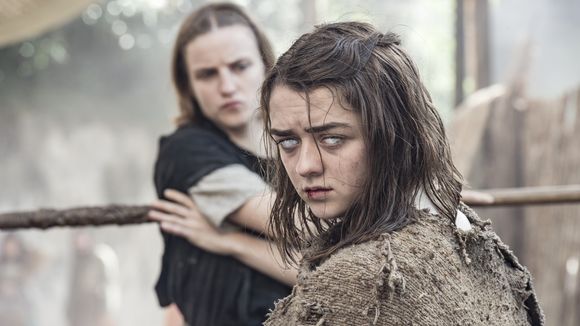
THE TYRELLS & TOMMEN
And last, but not least, let’s not forget about House Tyrell and King Tommen. We see that Margaery is still being held captive, and it is presumed that her brother, Loras, is as well, though we don’t actually see him. It was one thing when Tommen didn’t rescue his mother, but it is another that he is not attempting to free Margaery, his wife and queen of the Seven Kingdoms. It makes us question what is going on with Tommen, and to what extent he even retains power and control. Also, keep in mind that Lady Olenna Tyrell is still out there, and in the past she has been a master schemer, always looking to improve the position of House Tyrell and weaken those that she sees as threats (i.e. she colluded with Baelish to orchestrate the entire Red Wedding and get rid of Joffrey). Another Tyrell to remember is Mace Tyrell, Margaery/Loras’ father, who Cercei had shipped off to Braavos just before she got thrown in a cell. Keep an eye on how everything in King’s Landing plays out between the Tyrells/Lannisters/King Tommen/High Sparrow.
PEOPLE AND PLACES TO KEEP AN EYE OUT FOR…
Bran & Rickon Stark
Baelish
Thoros of Myr & Beric Dondarrion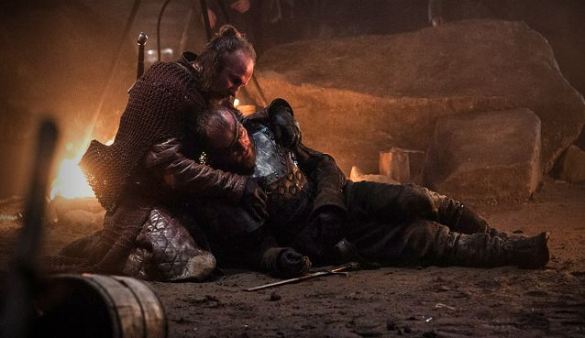 Gendry
Gendry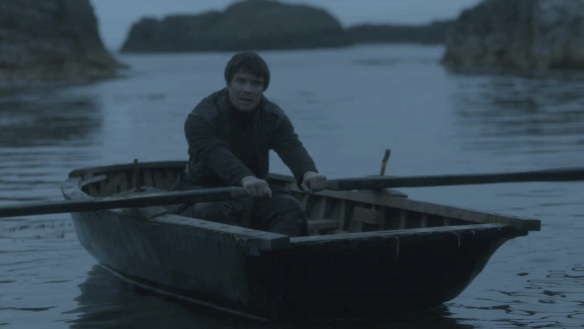 Yara & Balon Greyjoy/Iron Islands
Yara & Balon Greyjoy/Iron Islands